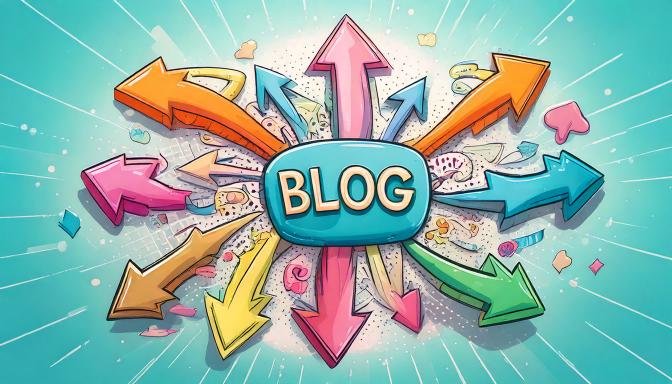SEO and Content Strategies to Grow Your Blog Further: Turning Traffic Into Loyal Fans
Welcome back, lovely creators! 🎉 Now that you’ve got your blog up and running (high-five, by the way 🙌), it’s time to focus on what will really make it shine—SEO and content strategies. These are the keys to turning random visitors into loyal fans, growing your audience, and, yes, increasing those sweet, sweet conversions.
Imagine this: your blog becomes the go-to resource in your niche. People find you, they trust you, and they stick around because your content delivers exactly what they need. Sound good? Let’s dive in!
Step 1: Understand the Basics of SEO (Search Engine Optimization)
SEO is the magic that helps people discover your blog when they search on Google. But it’s not as mystical as it sounds—it’s actually a set of best practices that help your blog rank higher in search results. The higher you rank, the more traffic you get. Simple, right?
Here’s what matters in SEO:
- Keywords: These are the phrases people are typing into search engines. You need to know what your audience is searching for and incorporate those words into your content.
- On-Page SEO: This includes optimizing your blog post titles, headers, images, and meta descriptions.
- Off-Page SEO: This refers to getting other websites to link back to your blog (backlinks), which tells Google, “Hey, this site is trustworthy!”
- User Experience: The easier your blog is to navigate, the better your SEO will be.
Quick Tips:
- Use Ubersuggest or Google Keyword Planner to find the right keywords for your posts.
- Focus on long-tail keywords (they’re more specific and less competitive). For example, instead of just targeting “blogging tips,” go for “blogging tips for beginners in 2024.”
- Make sure your blog is mobile-friendly. Over 50% of users are on mobile, and Google loves mobile-responsive sites!
Study Insight:
According to a study by Backlinko, the average #1 ranking page on Google also ranks for about 1,000 other relevant keywords. This means if you’re optimizing well, you’ll attract traffic from more than just your main target phrase!
Step 2: Create Consistent, Valuable Content
Your content is your voice, your message, and your value. But here’s the thing: it’s not enough to just write anything. You need to create content that speaks directly to your audience’s needs, solves their problems, and keeps them coming back for more.
Focus on these content strategies:
- Create cornerstone content: These are long, in-depth posts that cover a topic comprehensively. This blog post you’re reading right now is an example of cornerstone content. These posts become the foundation of your blog and drive the most traffic.
- Be consistent: The key to keeping your audience engaged is regular posting. You don’t need to publish every day, but consistency builds trust. Aiming for once or twice a week is a good starting point.
- Solve problems: Every piece of content should answer a question or solve a problem. Use tools like AnswerThePublic to find out what people in your niche are asking about.
Quick Tips:
- Mix up your content with blog posts, videos, infographics, and podcasts—people love variety!
- Use storytelling in your posts. People connect with stories, and it makes your content more memorable.
Motivation Boost:
People remember stories 22x more than they remember facts. So don’t be afraid to infuse personal stories into your content—it helps people connect with you!
Step 3: Master the Art of Internal Linking
Internal linking is your secret weapon. By linking to your own posts within your blog, you guide your visitors to related content and help search engines understand the structure of your site. This boosts your SEO and keeps people on your site longer—a win-win!
Internal Linking Best Practices:
- When writing a new post, always link to at least two or three other relevant posts on your blog.
- Use descriptive anchor text (the clickable words) that tells both your readers and search engines what the linked post is about.
- Make sure your cornerstone content has plenty of internal links pointing back to it.
Quick Tips:
- Create a blog post that’s a roundup of all your best content. For example, “Top 10 Most Popular Posts on [Your Blog]”—and link to each post!
- Always link to related posts at the end of each article to keep people engaged.
Research Insight:
A study from Moz shows that sites with a strong internal linking structure see up to 40% higher rankings than those with poor internal links. Google loves when everything is connected!
Step 4: Optimize Your Blog Posts for On-Page SEO
Each blog post should be optimized to rank as high as possible on search engines. Here’s how to do it:
On-Page SEO Checklist:
- Keyword in the Title: Make sure your primary keyword is in the title of your post (preferably at the beginning).
- Headers (H1, H2, H3): Use headers to break up your content. Search engines use headers to understand the structure of your post.
- Meta Description: This is the short description that shows up under your post title in search results. Include your keyword and make it enticing so people click through to your blog.
- Alt Text for Images: Google can’t “see” images, so add descriptive alt text to each image that includes your keyword.
- Short, Snappy Paragraphs: Google loves easy-to-read content, and so do your readers. Use short paragraphs and lots of white space.
Quick Tips:
- Install the Yoast SEO plugin if you haven’t already. It will guide you through optimizing each post as you write.
- Use a content calendar to plan out topics in advance, and make sure every post is part of your bigger SEO strategy.
Behavioral Insight:
Studies show that 75% of users never scroll past the first page of Google results. That’s why focusing on SEO for every blog post is so important!
Step 5: Promote Your Content Across Platforms
Don’t wait for people to find your blog—you need to actively promote it! Social media, email marketing, and even YouTube are excellent channels to bring traffic to your blog. Plus, Google pays attention to how often your content is shared and engaged with.
Content Promotion Ideas:
- Share your blog posts on Pinterest (yes, Pinterest is a search engine!)
- Post snippets or quotes from your blog on Instagram or Facebook
- Turn your blog content into short YouTube videos and link back to your blog in the video description
- Build an email list and send out regular updates with your latest blog posts
- Join Facebook groups or online communities related to your niche, and share your blog content where it fits (without being spammy!)
Quick Tips:
- Repurpose your content! You don’t always have to create something new. Take a blog post and turn it into an infographic, a video, or a podcast episode.
- Use UTM links to track where your traffic is coming from when promoting on social media.
Study Insight:
According to HubSpot, companies that prioritize blogging are 13x more likely to see positive ROI. But the key is to promote your content beyond your blog!
Step 6: Analyze and Refine (Keep Improving)
SEO is not a “set it and forget it” thing. You need to keep an eye on what’s working and adjust your strategy over time. The good news? Tools like Google Analytics and Search Console can tell you exactly how your content is performing.
What to Look For:
- Top-performing posts: Which blog posts are getting the most traffic? Write more content like this!
- Keyword performance: Check which keywords your site is ranking for and optimize your content further for those keywords.
- Bounce rate: If visitors are leaving your site quickly, you may need to improve your content or design to keep them engaged.
Quick Tips:
- Set aside time each month to review your analytics and update older posts. Refreshing old content can give your rankings a boost.
- Focus on engagement metrics like time on page and comments—these tell you how valuable your content is to your readers.
Motivation Boost:
SEO is a long game, but it’s worth it. Consistency and persistence pay off! Keep refining your strategy, and you’ll see steady growth over time.
FAQ: Your SEO and Content Questions Answered
Q: How long does it take to see results from SEO?
A: SEO results can take anywhere from a few weeks to a few months, depending on how competitive your keywords are and how consistently you’re publishing content.
Q: What’s more important—content or SEO?
A: They go hand in hand! Content is the foundation, and SEO is the strategy to get it seen. You can’t have one without the other.
Q: How many keywords should I focus on per blog post?
A: Focus on one primary keyword, but you can also include a few secondary keywords. Just don’t overdo it—Google values natural writing.





